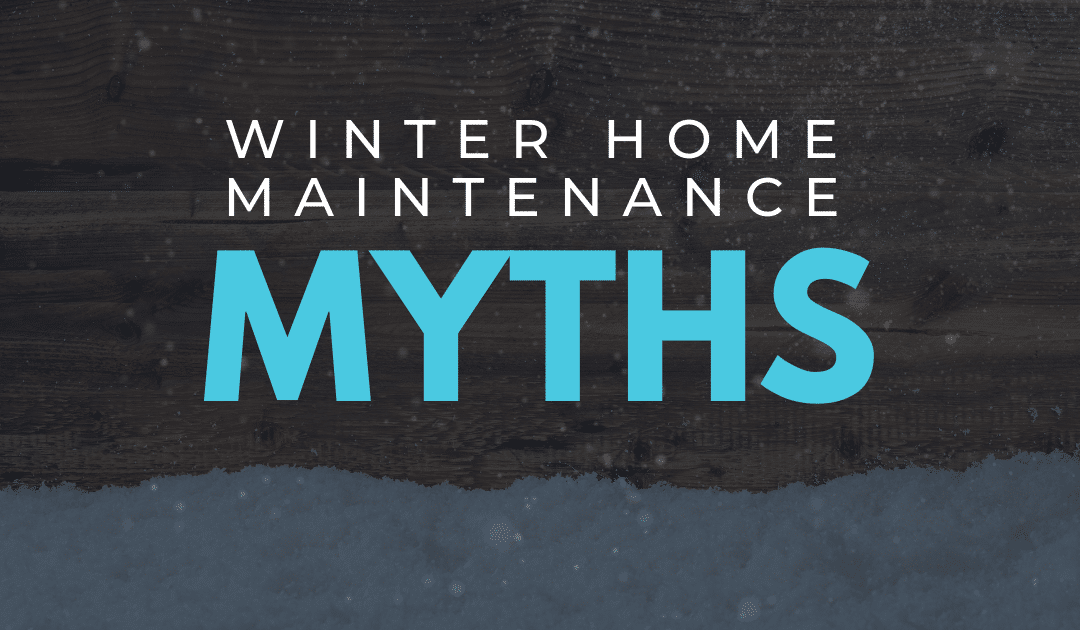
by California Casualty | Auto Insurance Info |
There’s nothing quite like that new car feeling. If you’re going into the new year with a new ride, you can take steps to make sure it runs and looks great for years to come. By maintaining the interior, exterior, and engine, you’ll not only keep it looking new, but also ensure that it’s safer on the road, costs you less in repairs, performs optimally, and holds its resale value.
Here are 30 quick tips to keep your car ageless.
Protect the Interior
1. Use windshield screens to protect your interior from UV rays and to keep internal temperatures down (direct light and high temps dry out and fade interiors fast!).
2. Regularly run your A/C to keep it in top working condition – 10 mins every week should do the trick. Same for the defroster.
3. Have a trash receptacle in the car, which can help prevent stains, spills, and loose trash.
4. Clean the interior – seats, dash, carpets, door panels – at least once a month.
5. Vacuum weekly, using a handheld vac with an attachment.
6. Although sometimes difficult at the beginning, but makes a huge difference over time: try implementing a rule of banning greasy, oily, creamy, or crumbly foods from the car.
7. Replace any floormats that are wearing through – as soon as holes form, your carpet underneath is at risk of damage.
8. Remove stains immediately – don’t wait! The sooner you get to them, the easier they come out.
9. Get your A/C serviced after several years – when not checked, it can cause a moldy smell that settles into your car’s upholstery for good.
10. Apply protective conditioners to leather and vinyl seats and the dash to keep them protected from sun exposure. Think of them as sunscreen for your car.
Don’t Forget the Exterior
11. Wash your car weekly to rid it of dust, mud, and dirt. Go to your local car wash or, if washing at home, only use cleaners formulated for cars.
12. Wax at least twice a year – not only does this keep your ride shiny but it helps protect your paint from UV rays.
13. Repair windshield chips immediately. Waiting can give them time to spread, causing unsafe conditions and requiring a more expensive windshield repair.
14. Only use microfiber towels on your car’s interior and exterior. Other fibers, as well as paper towels, may scratch or damage surfaces.
15. Garage (or cover) your car if possible. This keeps it safe from UV rays, the errant baseball, bird droppings (which can etch paint), car thieves, and a host of other risks.
16. If you can, get professional detailing done annually. The pros do an amazing job and, over time, regular detailing boosts your vehicle’s resale value.
17. Check tire pressure monthly and adjust as needed according to the PSI listed in your owner’s manual. Under- and over-inflated tires increase your chances of a roadside emergency. While you’re checking pressure, inspect tires for bulges, cracks, and other damage.
18. Get tires rotated and have the alignment checked on schedule.
19. Clear leaves and other debris from the windshield exterior grill so as to not clog up the A/C system.
20. Touch up paint chips to discourage rusting.
21. Use a clay bar to get rid of road debris that doesn’t come off with washings.
22. Only use window cleaners that are safe for car windows – only vinegar mixes or special car formulas, nothing ammonia-based. And use microfiber towels rather than paper ones.
Maintain the Engine
23. Stick to your service schedule – trusted mechanics know what to do at the right time.
24. Keep revs under 3,000 – this will keep your piston rings happy and healthy.
25. If your check engine light comes on, get it checked! Most of the time, it’s something insignificant, but other times could signal a major problem.
26. Check oil regularly, even if you get it serviced professionally. Oil is your car’s lifeblood – best to err on the side of checking too often.
27. Drive your vehicle regularly – it keeps the battery charged and the fluids circulating. Start it at least once or twice a week and leave the engine running for 20 to 30 minutes to power the battery.
Don’t Forget To:
28. Get to know your owner’s manual. Know what the indicator lights mean, look at the maintenance schedules, know what kind of oil is recommended, and memorize your tire PSI.
29. Get fixes done sooner rather than later. Procrastinating on car repairs or service can multiply problems later on.
30. Make a habit of doing a visual check of your car each time you approach to get in. Whether it’s a low tire, a ding, or a back-up hazard, knowing what’s going on with your car at all times gives you the info needed to plan and act.
The more TLC you give your car, the more rewards you’ll reap in terms of safety, cost savings over time, and a steady resale value. Plus, there’s that “proud parent” feeling of having a car that both runs and looks great for years on end!
Now that you know everything to do to keep your car in tip-top condition, check out what you definitely shouldn’t do. Here are the10 Worst Things You Can Do To Your Car.
This article is furnished by California Casualty, providing auto and home insurance to educators, law enforcement officers, firefighters, and nurses. Get a quote at 1.866.704.8614 or www.calcas.com.

by California Casualty | Nurses |
If you’re a nurse, America owes you a debt of gratitude. Since early last year, you have been on the frontlines of COVID-19 – treating the sick, caring at the bedside, teaching us how to stay healthy, advocating for your patients, and serving as liaison to their families.
We know you’re stressed, you’re tired and you’ve been running on fumes for months. But we also know that you’re strong and incredibly resilient! You’re that bright light of compassionate care and humanity during a scary time. You’re the ones we trust implicitly.
And for that reason, we ask that you remember to take care of yourself, too. Not surprisingly, pandemic stress is affecting nurses’ mental and physical health at unprecedented levels. If you’re feeling overwhelmed or depleted, here are some resources and steps you can take to protect your health and well-being.
-
- Nurture your immune system. Your immune system is taking a battering right now. Do what you can to soothe and strengthen it so it can keep you healthy. Nourish yourself with healthy foods, regular exercise, and enough sleep (when you can!).
- Get out in nature as often as possible. Studies show that spending time in nature improves mental health and reduces blood pressure, stress hormones, and muscle tension.
- Check out the Well-being Initiative for free resources such as video calls for peer support, self-assessment tools, hotlines, a “happy app” and writing-as-therapy. The Initiative was developed by the American Nurses Foundation in partnership with a number of nursing organizations.
- Practice mindfulness and/or meditation, which can help lower stress levels and keep you tuned into your physical and psychological state. There are plenty of books and free apps to get you started.
- Breathe. By learning breathing techniques for stress relief, you have a powerful tool you can use anytime, anywhere.
- Get support when you need it. Talk with friends, family, peers, or even a professional, depending on your level of needed support. If your workplace has an Employee Assistance Program and you could benefit from the support, sign up!
- Stay connected. Humans are built for social connection. Even if you’re an introvert, make time for periodic phone calls or web chats with cherished friends and family.
- Read positive things. Avoid doom-scrolling, and start your day with inspirational reading or anything else that uplifts you.
- Advocate for your and your colleagues’ health. Make your voice heard in terms of safety protocols and support at your workplace.
- Take time and space to process your feelings. You may feel nothing or all the things. If the latter, when appropriate, take time to process, meltdown, cry, whatever you need to do. No human is equipped to carry this much grief and stress.
- Lean on your nurse leaders. Getting the right support is more important than ever. Collaboration, support, and community will get you and your colleagues through.
- Reconnect to people and things you love. Joy does amazing things for health. Try to find time for small joys and delights – this could be something you love doing, seeing a loved one, or returning to a long-forgotten hobby.
- Lean into your community. Show up for your co-workers and give them support when your “wellness” tank is filled up. Every health care worker knows the struggle right now, so sometimes just an “I know what you’re going through and I’m here if you need anything,” can make all the difference.
Often, it’s those who do so much for others who put their own needs last. Ask for help and support when you need it – and let family members, friends, neighbors, and others know what they can do to help (because they want to!). The world needs its health care heroes right now – and we want you to be healthy, strong, and safe!
This article is furnished by California Casualty, providing auto and home insurance to educators, law enforcement officers, firefighters, and nurses. Get a quote at 1.866.704.8614 or www.calcas.com.

by California Casualty | Auto Insurance Info, Consider This |
It’s officially pothole season.
Potholes can pop up on roadways during any season, but why do they seem so prevalent during the first few months of the year?
When winter is ending and spring is on the horizon, the weather is constantly fluctuating between mild and freezing temperatures. Rain, snow, and ice get into smaller holes and cracks in the pavement, and as the temperature jumps back and forth from high to low, the precipitation continually freezes and thaws expanding those pavement cracks causing others to form. As cars and heavy trucks drive over them, the asphalt chips away, thus creating potholes.
Potholes, no matter how small, can wreak havoc on your entire vehicle. Here are 5 ways hitting a pothole can cause damage.
1. Steering & Suspension
Your vehicle’s suspension absorbs bumps so you can’t feel them when you drive. If you cause enough wear and tear on your suspension system, it could result in a number of problems with your steering, including: vibrations, noises when you turn, vehicle pulling to one side, etc.
2. Undercarriage
Vehicles that ride lower to the ground have a better chance of being damaged by a pothole. They can cause scratches and scrapes, that aren’t dangerous until they start to rust or leak. They can also rip off low-hanging bumpers.
3. Tires & Wheels
It’s no secret that debris from potholes can cause holes, leaks, and tears in your tire, but when you hit a pothole fast enough, it can also cause a complete tire blowout. Potholes can also damage your wheels by bending or cracking your rim. And if there is visible damage, you’ll likely have to replace the entire wheel.
4. Body & Exhaust System
Pavement debris and rocks can scratch the paint on your vehicle and cause rips and leaks in your exhaust pipes, muffler, and catalytic converter. If your exhaust pipes have been damaged, it can be a serious issue. Ripped pipes can leak exhaust fumes into the cabin of your vehicle and cause serious health issues (including death). If you hear a strange noise or lose power after hitting a pothole, there is a good chance your exhaust pipes have been damaged and you need to pull over.
5. Loss of Control
Lastly, one of the most dangerous consequences of hitting a pothole is that it could cause you to lose control of your vehicle. Losing control for even a few seconds, could not only cause damage to your vehicle, but could also be deadly for you and your passengers. That is why it is important to watch the road for potholes when you drive and try and avoid them.
Potholes are extremely dangerous for you and your vehicle, but sometimes accidents do happen.
So, what if you accidentally hit a pothole, is damage done to your vehicle covered by insurance? Typically pothole damage is covered if you have collision insurance. If you aren’t sure, call your agent and review your coverage today.
This article is furnished by California Casualty, providing auto and home insurance to educators, law enforcement officers, firefighters, and nurses. Get a quote at 1.866.704.8614 or www.calcas.com.

by California Casualty | Educators |
Coronavirus has taken its toll on the world, mentally and physically, and after almost an entire calendar year of adapting to the constant changes in education, our teachers are not the only ones who are feeling the effects. Students across the country have had their lives turned upside down more times than they can count within the last year- virtual classes, hybrid learning, not getting to spend time with their friends, avoiding public places, no birthday parties, spending their vacation-time indoors, wearing masks, not seeing their older relatives, etc. It’s no secret adjusting to our new normal has been stressful and hard on them.
As a teacher, your students trust and confide in you- sometimes more than their own parents- so oftentimes you play a critical role in helping them manage their own mental health, especially amidst a pandemic. By creating an environment that is safe and comfortable you can aid in helping them cope with their anxious or depressing thoughts and feelings, and catch issues before they become major problems.
Here are 4 easy ways you can create a classroom culture that encourages positive mental health.
1. Create a Safe Space for Conversation
You can support the mental health of all of the students in your class by fitting in small lessons or units informing them about mental health, the symptoms, and what they can do for support. Normalize talking about feelings and the importance of mental health in your classroom, like you talk about the importance of physical health. Giving your students a safe space to discuss in your classroom will let them know that those anxious thoughts are, “normal” and that they are not the only ones feeling that way. The more you talk about common thoughts, feelings, and actions related to mental health, the better your students will be able to understand and identify them within themselves. Students and parents alike will benefit from knowing more about mental health issues and how they can cope and work through them.
2. Check in With Your Students
Checking in with your students will give you insight into their feelings, so will have foresight into what the day ahead will look like, and so you can follow up with them (or if it’s serious or consistent, with their parents) and see why they are feeling the way they are. There are a ton of different ways you can check in with your students. Many teachers use Mental Health Check-In Charts in their classrooms, so students can let the teacher know how they are feeling at the beginning of each day. If you’re teaching virtually, you can still use the same method, just have each student send an emoji or word that describes their feelings. If you would prefer to do check-ins more privately, you can have students keep a daily journal where they write a few sentences each day about their feelings and then submit them.
3. Create a Positive Learning Environment
Creating a positive environment for students means not only encouraging positivity, but it also means making your classroom (or virtual classroom) somewhere that your students feel comfortable, like they belong, can take risks, tackle challenges, and trust others. Some easy ways you can encourage these behaviors in your room include, incorporating engaging lesson plans and experiments, using fun technology or apps (like Kahoot), adding more group work and projects, bringing in flexible seating, and adding decor that encourages positivity and kindness like: posters, sticky notes, bulletin boards, etc. Not only does a positive environment help with students’ mental health, but it also has proven to boost students learning and academic success up to 25%.
4. Incorporate Some Brain Breaks Into Your Day
Brain breaks are an important part of the educational day, and they are great for student, and teacher, mental health! However, they are sadly often overlooked and forgotten about due to lack of planning and time. Brain breaks have multiple benefits including better behavior, increased productivity and mood, enhanced comprehension, creative thinking, and increased time on task. Because children’s brains cannot focus on one subject for too long, using short brain breaks between lessons have proven to help students pay more attention and succeed more overall in the classroom. Examples of easy brain breaks you can incorporate into your day include: a yoga video, short dancing session, 2-minute stretches, short meditation, taking a small walk around the classroom, or just closing their eyes and taking a minute to relax.
Even with a positive classroom culture, some students can still struggle with their mental health. As a teacher, it is important to know the signs of students that may need help.
Here are some behaviors to keep an eye out for:
-
- Feeling sad, extremely tired, or withdrawn for more than two weeks
- Has or expressed intentions to harm themselves or others
- Intense worries or fears that make them unable to do daily tasks
- Severe mood swings or changes in personality
- Frequently causing problems or interrupting class
- Having difficulty concentrating
If you see a student who is struggling week after week and not making any improvements, it’s time to reach out to parents, school counselors, or nurses for additional help.
This article is furnished by California Casualty, providing auto and home insurance to educators, law enforcement officers, firefighters, and nurses. Get a quote at 1.866.704.8614 or www.calcas.com.

by California Casualty | Homeowners Insurance Info |
Tomato juice is the best way to de-funk a skunked dog. Newspapers are the top choice for getting your windows sparkly clean. You’ve probably heard these tips a million times before? Too bad they don’t actually work!
When it comes to maintaining your home, the last thing you want is to follow myths that don’t work. We’ve rounded up 6 wintertime home maintenance myths that not only aren’t true – but could actually cause damage or a false sense of safety. To save you research time, we’ve also included what to do instead.

Use kitty litter to prevent slipping on ice – The idea is that putting litter on icy walkways and driveways will reduce the slickness by giving some grit to the surface. In actuality, litter really isn’t effective and mostly just ends up making a mess.
Do this instead – Use clay sand – the kind you’d find in a children’s sandbox – to add traction to the surface of the ice and reduce the risk of slipping. It’s cheaper and more effective than litter or the other common go-to’s. Also note that ice melting products, including various salts, are destructive to plants, surfaces, and sometimes pets as well.

Your smoke detector’s test button is all you need for a test – We all know we’re supposed to test our smoke detectors monthly. That usually means pressing the “test” button until you hear an ear-piercing, loud siren from the detector. The thing is, the test button just checks to make sure that the batteries and the alarm sound are working, not the sensor that detects smoke.
Do this instead – To make sure you’re testing for smoke sensitivity, you should test with actual smoke. Light a long wooden kitchen match (or 2-3 small ones if that’s not available), then blow out the flame, holding it up so the smoke wafts up to the unit. If the unit doesn’t sound from the smoke, replace it immediately.

Turn off your heat when not at home – Turning off the heat when you’re out of the house seems like an obvious time and money saver. Turns out that this “best practice” is faulty – and can put your home at risk for frozen and burst pipes, among other damage.
Do this instead – Whether it’s leaving for a whole day, a weekend trip, or even a longer winter vacation, make sure you leave the thermostat set to 55 deg F or higher. If your thermostat has multiple settings, make sure you choose the “permanent/vacation hold” so that it’s not overridden the next day to resume to normal temperatures. Leaving your heater on will also prevent it from having to work extra hard upon your return.

The more insulation, the better – Attic insulation is one of the most cost-effective ways to save energy in your home. So, the thinking goes: more must mean better. Some homeowners end up stuffing their attic full of the fluffy stuff, not knowing they’re dialing down its effectiveness.
Do this instead – Figure out the sweet-spot amount for your attic space. In order for insulation to do its job, its surface needs to be surrounded by air space. So, avoid forcing it into wall cavities so much that it becomes compacted. Also, too much in the main attic space can block ventilation of the soffit and eaves, creating prime conditions for condensation, mold, and eventually rot.

Thaw a frozen pipe quickly with a blowtorch – This myth also has versions starring matches, candles or lighters. Unfortunately, none of these is safe, and all can cause more damage to the pipe. In short, remember never to use an open flame of any sort on a frozen pipe.
Do this instead – A standard, everyday hairdryer is your go-to secret weapon for thawing freezing pipes. You can also use a space heater or heat lamp, but the dryer allows you to sweep, angle, and vary the heat source much easier. For tips on preventing frozen pipes in the first place, check out our post here.

Hot water defrosts windshields fastest – No doubt about it – being delayed by a frozen windshield in the morning is one of winter’s worst annoyances. Many people reach for hot water, wanting to defrost the glass as quickly as possible. Unfortunately, pouring (or even trickling) hot water on your windshield puts you at huge risk for cracking that glass.
Do this instead – First, remove the bulk of the ice with a soft brush or plastic ice scraper. Next, warm it up slowly using lukewarm water, your car’s defroster, and/or even your air conditioning (seriously!). Check out all 5 of our quick tips for windshield defrosting here.
By replacing de-bunked winter maintenance myths with proven strategies, you’ll probably dodge some avoidable damage or even repair costs (at the very least, time and energy). But don’t stop there – pay it forward by passing on your newfound wisdom to friends, family, and neighbors!
This article is furnished by California Casualty, providing auto and home insurance to educators, law enforcement officers, firefighters, and nurses. Get a quote at 1.866.704.8614 or www.calcas.com.











